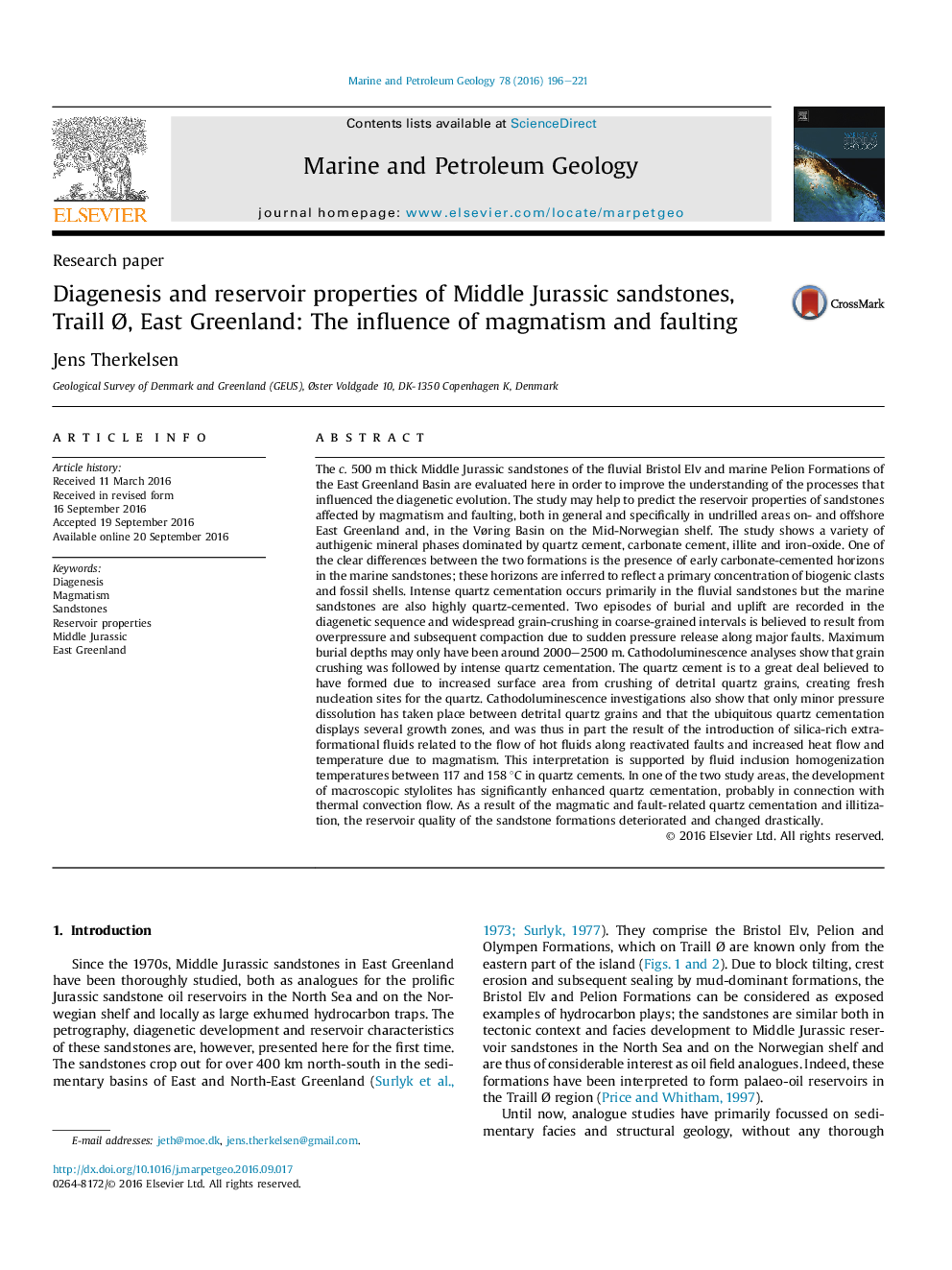| کد مقاله | کد نشریه | سال انتشار | مقاله انگلیسی | نسخه تمام متن |
|---|---|---|---|---|
| 6434380 | 1637149 | 2016 | 26 صفحه PDF | دانلود رایگان |

- Presentation of the diagenetic evolution in a c. 500 m thick Middle Jurassic sandstone from East Greenland.
- The diagenetic evolution of the sandstones is strongly affected by magmatism and faulting.
- Grain crushing followed by intense quartz cementation is present despite shallow burial (2000-2500Â m).
- Fluid incl. temp. (117-158 °C) in quartz cement may indicate introduction of hot fluids and temperature impact from magmatism.
- Especially intense quartz cementation has deteriorated and changed the reservoir quality drastically.
The c. 500 m thick Middle Jurassic sandstones of the fluvial Bristol Elv and marine Pelion Formations of the East Greenland Basin are evaluated here in order to improve the understanding of the processes that influenced the diagenetic evolution. The study may help to predict the reservoir properties of sandstones affected by magmatism and faulting, both in general and specifically in undrilled areas on- and offshore East Greenland and, in the Vøring Basin on the Mid-Norwegian shelf. The study shows a variety of authigenic mineral phases dominated by quartz cement, carbonate cement, illite and iron-oxide. One of the clear differences between the two formations is the presence of early carbonate-cemented horizons in the marine sandstones; these horizons are inferred to reflect a primary concentration of biogenic clasts and fossil shells. Intense quartz cementation occurs primarily in the fluvial sandstones but the marine sandstones are also highly quartz-cemented. Two episodes of burial and uplift are recorded in the diagenetic sequence and widespread grain-crushing in coarse-grained intervals is believed to result from overpressure and subsequent compaction due to sudden pressure release along major faults. Maximum burial depths may only have been around 2000-2500 m. Cathodoluminescence analyses show that grain crushing was followed by intense quartz cementation. The quartz cement is to a great deal believed to have formed due to increased surface area from crushing of detrital quartz grains, creating fresh nucleation sites for the quartz. Cathodoluminescence investigations also show that only minor pressure dissolution has taken place between detrital quartz grains and that the ubiquitous quartz cementation displays several growth zones, and was thus in part the result of the introduction of silica-rich extra-formational fluids related to the flow of hot fluids along reactivated faults and increased heat flow and temperature due to magmatism. This interpretation is supported by fluid inclusion homogenization temperatures between 117 and 158 °C in quartz cements. In one of the two study areas, the development of macroscopic stylolites has significantly enhanced quartz cementation, probably in connection with thermal convection flow. As a result of the magmatic and fault-related quartz cementation and illitization, the reservoir quality of the sandstone formations deteriorated and changed drastically.
Journal: Marine and Petroleum Geology - Volume 78, December 2016, Pages 196-221